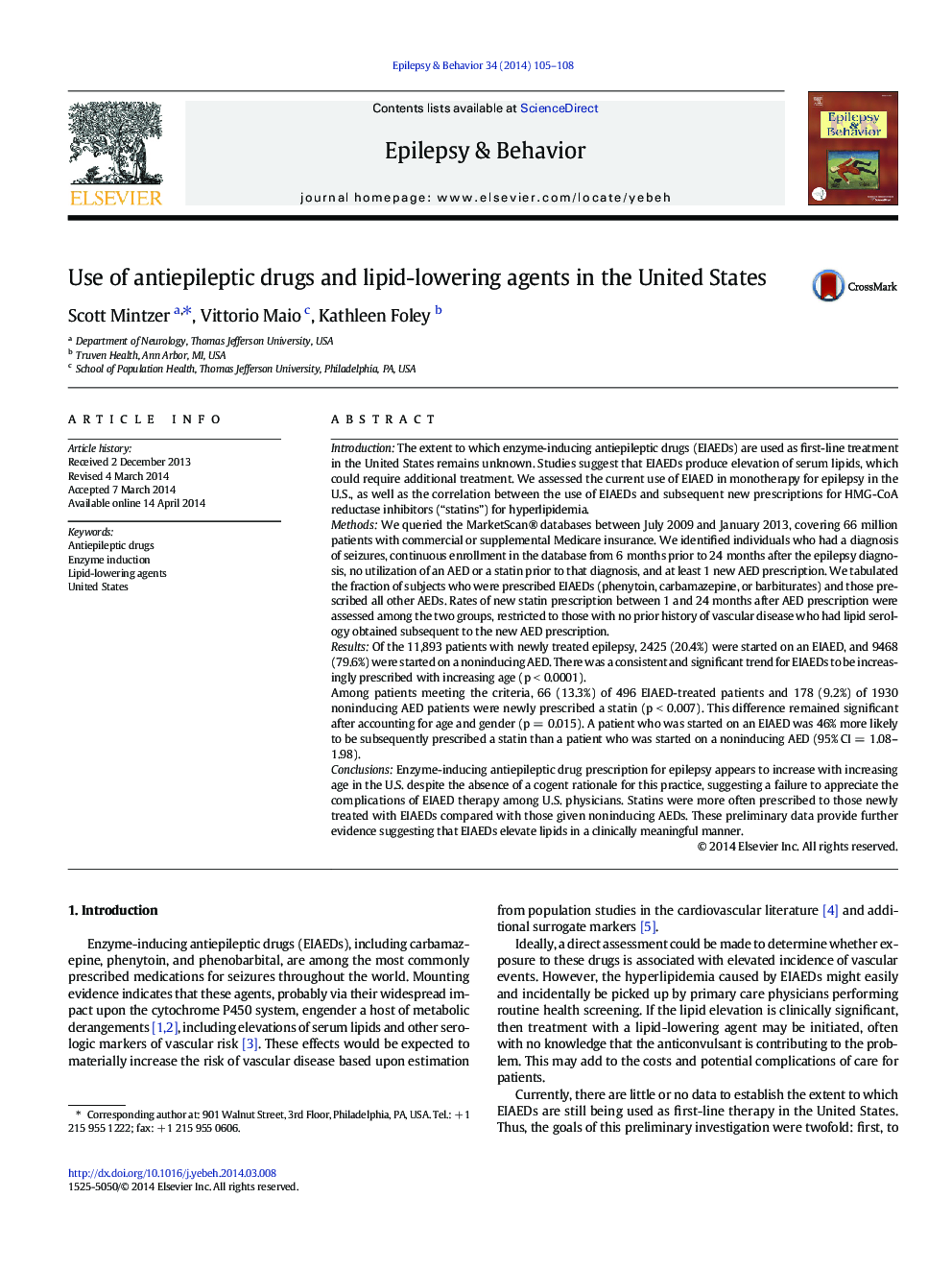| کد مقاله | کد نشریه | سال انتشار | مقاله انگلیسی | نسخه تمام متن |
|---|---|---|---|---|
| 6012353 | 1579855 | 2014 | 4 صفحه PDF | دانلود رایگان |
- About 20% of patients with newly-treated seizures in a commercially insured U.S. population receive an EIAED.
- EIAEDs are more commonly prescribed to older patients, suggesting a lack of appreciation for the complexities of their use among American physicians.
- A patient treated with an EIAED is almost 50% more likely to be subsequently treated with a lipid-lowering agent compared with one treated with a noninducing AED.
- This suggests a higher incidence of clinically relevant hyperlipidemia with potential medical and economic implications.
IntroductionThe extent to which enzyme-inducing antiepileptic drugs (EIAEDs) are used as first-line treatment in the United States remains unknown. Studies suggest that EIAEDs produce elevation of serum lipids, which could require additional treatment. We assessed the current use of EIAED in monotherapy for epilepsy in the U.S., as well as the correlation between the use of EIAEDs and subsequent new prescriptions for HMG-CoA reductase inhibitors (“statins”) for hyperlipidemia.MethodsWe queried the MarketScan® databases between July 2009 and January 2013, covering 66 million patients with commercial or supplemental Medicare insurance. We identified individuals who had a diagnosis of seizures, continuous enrollment in the database from 6 months prior to 24 months after the epilepsy diagnosis, no utilization of an AED or a statin prior to that diagnosis, and at least 1 new AED prescription. We tabulated the fraction of subjects who were prescribed EIAEDs (phenytoin, carbamazepine, or barbiturates) and those prescribed all other AEDs. Rates of new statin prescription between 1 and 24 months after AED prescription were assessed among the two groups, restricted to those with no prior history of vascular disease who had lipid serology obtained subsequent to the new AED prescription.ResultsOf the 11,893 patients with newly treated epilepsy, 2425 (20.4%) were started on an EIAED, and 9468 (79.6%) were started on a noninducing AED. There was a consistent and significant trend for EIAEDs to be increasingly prescribed with increasing age (p < 0.0001).Among patients meeting the criteria, 66 (13.3%) of 496 EIAED-treated patients and 178 (9.2%) of 1930 noninducing AED patients were newly prescribed a statin (p < 0.007). This difference remained significant after accounting for age and gender (p = 0.015). A patient who was started on an EIAED was 46% more likely to be subsequently prescribed a statin than a patient who was started on a noninducing AED (95% CI = 1.08-1.98).ConclusionsEnzyme-inducing antiepileptic drug prescription for epilepsy appears to increase with increasing age in the U.S. despite the absence of a cogent rationale for this practice, suggesting a failure to appreciate the complications of EIAED therapy among U.S. physicians. Statins were more often prescribed to those newly treated with EIAEDs compared with those given noninducing AEDs. These preliminary data provide further evidence suggesting that EIAEDs elevate lipids in a clinically meaningful manner.
Journal: Epilepsy & Behavior - Volume 34, May 2014, Pages 105-108
